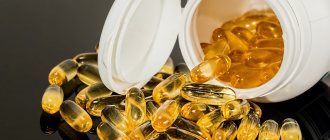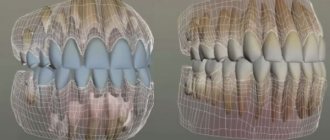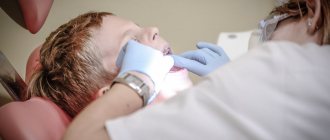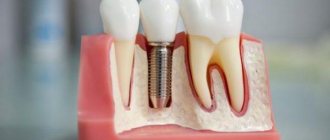If you take care of your teeth, they will always have an attractive appearance. If the teeth are healthy, then they allow their owner to bite and chew food without pain. Only teeth that a person takes care of will always allow him to be in comfort. Therefore, people consistently brush their teeth and visit dentists. However, no matter how high-quality dental care is carried out, at one moment a person may feel severe pain if he eats a cold or hot dish. If this happens, then there is a possibility that the teeth suffer from hyperesthesia - high sensitivity to external factors. The reason may be the destruction of the enamel. If pain occurs from sudden temperature changes, then this indicates 1 degree of hyperesthesia. You need to visit a dental clinic as soon as possible before the problem gets worse. The dentist will quickly find the causes of the problem, and then eliminate these causes.
What is hyperesthesia?
Hyperesthesia is an extreme sensitivity to external stimuli, such as sudden temperature changes, chemical exposure or ordinary touch. Such irritating factors can lead to short-term but severe pain. At the first stage, the teeth react to the temperature of the food, but later pain also arises from simply touching the tongue or exposure to certain substances. There is short-term pain that goes away quickly. Sometimes it doesn’t go away until 10-30 seconds.
If the tooth structure is so damaged that the nerve endings are exposed, then the person will experience pain from simply touching the area with a tongue or finger. Tooth enamel is the most durable tissue in the human body. It allows you to protect dentin from any external irritants. If the enamel is damaged, then any external factors will cause severe discomfort. If the dentin seal is broken, even the lightest touch will cause severe pain.
Special studies have been conducted that have shown that every third person suffers from hyperesthesia in the modern world, regardless of their location, social status or lifestyle. However, statistics have shown that women are more likely to suffer from this disease than the male population.
Treatment at home
Visiting the clinic is a prerequisite for quality therapy. If it is not possible to see a doctor, you can temporarily turn to folk remedies. The following show the greatest effectiveness:
- Infusions and decoctions of herbs. Rinsing allows you to cope with the manifestations of the inflammatory process, kills bacteria, relieves swelling, and promotes rapid healing.
- Propolis. The most effective are rinses with an alcohol tincture based on this substance. However, it is important to remember that such manipulations are only allowed for adult patients. They are contraindicated for children.
- Warm milk. It is worth drinking it warm as often as possible, holding it in your mouth for a short time. Dairy products contain calcium, which has a beneficial effect on the condition of enamel.
It is recommended to use special gels and rinses designed to clean sensitive incisors, canines and molars. They contain fluoride.
But you can’t rely solely on home treatments. They can only be an addition to complex drug therapy. Even if the unpleasant symptoms have disappeared, you should not neglect a visit to the doctor.
Choosing toothpaste
When deciding what to do when teeth become sensitive to cold and hot, the dentist will first of all recommend to the patient special products for daily cleaning. Bleaching compounds should be completely abandoned, even if they do not contain abrasives.
Let's look at what you need to pay attention to when purchasing:
- Stick only to specialized paste-like and gel-like preparations. Most manufacturers put a special mark on the packaging about the purpose of the product.
- At the pharmacy you can additionally purchase medications that reduce sensitivity.
- The more fluoride a product contains, the better in this situation. The substance has a positive effect on the condition of the enamel. The hard outer layer of the units is restored, they cease to hurt and respond to stimuli.
The brush should also be suitable. Medium-hard bristles are the best option for high-quality cleaning and preventing surface scratching. But before purchasing any hygiene items, it is better to consult a doctor.
How to protect teeth from hyperesthesia?
Many people believe that it is enough to brush their teeth twice or thrice a day, and they will always be fine. However, this is a common misconception! If you brush your teeth incorrectly, they will not only not become stronger, but, on the contrary, they can be seriously harmed. For example, a high abrasive content in toothpaste will cause the enamel to become thinner.
The best solution would be to buy a fluoride-containing paste that has a medium level of abrasiveness. During the research, it was possible to identify why this disease occurs less often in men. The fact is that due to stress, the functioning of the gastrointestinal tract is seriously deteriorated. Because of this, the acidity of the oral cavity changes. Due to frequent exposure to acid, they become highly sensitive to irritants, which results in severe pain that causes a lot of discomfort.
To avoid hyperesthesia, you need to brush your teeth every day and try as much as possible to protect yourself from stress.
What to do if a child has a toothache -
If a child has a toothache, how to numb the pain will depend on his age. In children over 6 years of age, it is optimal to use the drug Nurofen 200 mg (contains the NSAID ibuprofen), which is approved from 6 years of age. This drug will not only help relieve severe pain, but also has an anti-inflammatory effect (Fig. 9).
In children aged 3 months and older, it is also optimal to use an NSAID-based analgesic, for example, children's Nurofen in suppositories for the youngest, and in suspension for older children (Fig. 10-11). The package of Nurofen Baby suspension contains a special dispenser that helps measure the required amount of the drug, as well as a diagram that helps to calculate the volume of the drug depending on the child’s body weight.
In addition to Nurofen, from 2-3 months, a child can also use paracetamol-based analgesics, for example, children's Panadol in the form of a suspension (Fig. 12). Each 5 ml of suspension contains 120 mg of paracetamol.
The volume of suspension/dose of paracetamol will depend on the age (body weight of the child). The drug is taken 3-4 times a day, single doses of the drug in “ml” and “mg” depend on the age of the child - are indicated in Table 1. The permitted dose of paracetamol depending on the child’s body weight is -
| Body weight (kg) | Age | Paracetamol dose | |||
| One-time | Maximum daily | ||||
| ml | mg | ml | mg | ||
| 4,5-6 | 2nd month of life | Only on doctor's orders | |||
| 6-8 | 3-6 months | 4.0 | 96 | 16 | 384 |
| 8-10 | 6-12 months | 5.0 | 120 | 20 | 480 |
| 10-13 | 1-2 years | 7.0 | 168 | 28 | 672 |
| 13-15 | 2-3 years | 9.0 | 216 | 36 | 864 |
| 15-21 | 3-6 years | 10.0 | 240 | 40 | 960 |
| 21 -29 | 6-9 years | 14.0 | 336 | 56 | 1344 |
| 29-42 | 9-12 years | 20.0 | 480 | 80 | 1920 |
Toothache caused by hot and cold foods
If your teeth respond with a painful reaction when eating such dishes, this means that the problem lies in the enamel of the teeth. When the enamel is healthy, the tooth structure is reliably protected from sudden temperature changes. If your teeth respond with pain when you eat, you should immediately visit a dentist to identify the cause. Here are a few reasons that cause such pain:
- Tissue inflammation has occurred;
- The structure in the enamel is damaged;
- Non-carious lesions;
- Cracks have appeared;
- Due to severe stress, the enamel has become thinner.
By the way, it happens that such pains are caused by the endocrine system or they may be caused by a stomach disease. It is necessary to reconsider your eating habits. It is necessary to reduce the consumption of foods with too high and low temperatures, and also be careful when drinking sour juices. To do this, you should use a straw.
Ways to relieve toothache
If visiting a doctor is impossible for some reason, then there are ways to relieve pain at home. For some time, the listed methods provide relief, allow you to forget about the problem and calmly go about your business, but do not exclude the cause of the recurrence of toothache. Therefore, visit the dentist as soon as possible.
So, if your tooth hurts, take a painkiller, widely known and sold at the pharmacy. If there is no pharmacy, use iodine - moisten a cotton swab with two or three drops and place it on the painful area. The effect of this method is short-lived - toothache will be relieved for a maximum of five hours.
Another way is to use tinctures and decoctions. For toothache, a decoction of sage is effective (one tablespoon per 200 mg of boiling water, leave for 20 minutes, tightly closing the mug on top). Rinse your mouth with the resulting mixture. An infusion of chamomile is also effective - pour boiling water over one teaspoon of chamomile and leave for ten minutes, then rinse your mouth with the decoction. It is necessary to rinse at least five times a day. To rinse your mouth for toothache, you can use soda - add a teaspoon of salt or soda to one glass of water.
If a tooth hurts, place a piece of cotton wool soaked in alcohol in your ear on the side of the painful tooth, this will help relieve the pain.
If you have a toothache, you should absolutely not heat the sore spot. Heating it can only lead to the development of pain and an increase in the inflammatory process.
Remember that toothache is a symptom that some kind of inflammatory process has already begun in the oral cavity. Do not hesitate and do not get carried away with home treatment, but immediately make an appointment with the dentist.
To ensure that the question of what to do for toothache arises as rarely as possible, visit the doctor yourself twice a year. Our Dentistry on Shchelkovskaya has a system of appointment reminders, so you definitely won’t miss a preventive examination. Make an appointment now by calling 8 or using the online appointment form. We are located near metro station Shchelkovskaya.
Hyperesthesia after visiting the dentist
You should only visit reliable dental clinics. If the doctor does not have the proper skills and professionalism, then hyperesthesia may occur due to his actions. Most often the disease appears due to the following procedures:
- Cleaning and whitening of the dental cavity;
- Filling with photopolymerization procedure;
- Acid etching.
After any bleaching, special enamel protection must be carried out. If, after teeth whitening, pain is felt when eating foods with high and low temperatures, this means that the procedure was not carried out or was not performed as it should.
After the operation, the filled tooth became very sensitive to food with high and low temperatures, this may mean:
- Some inflamed tissue was never eliminated;
- Tissue inflammation has occurred;
- The doctor did not follow the technology, so the integrity of the seal was damaged during the installation process;
- The filling material irritates the tissue due to individual intolerance;
- There is an air bubble under the filling.
Unfortunately, in almost all of the above cases, the pain will not go away, but will get worse. When the pulp overheats, pulpitis can develop, which will lead to damage to other tissues. If your teeth react strongly to temperature changes for a long time, then you need to solve this problem as soon as possible.
As for tooth depulpation, it is normal if after the procedure the tooth reacts sharply to cold and hot food. If after some time the pain still remains, then you need to go to the dental clinic, because there is a possibility that the tooth was not fully treated.
Systemic reasons
- Hormonal imbalances. Often observed with improper use of hormones, pregnancy or menopause;
- Deficiency of vitamins and minerals. Products must contain magnesium (Mg), phosphorus (P), calcium (Ca);
- Stress. Depression, psychological fears, and increased anxiety can provoke hyperesthesia;
- Regular contact with chemicals (for example, when performing professional activities in production).
Initially, high sensitivity manifests itself to cold and hot drinks, while the pain lasts no more than 30 seconds. Later (in the absence of professional treatment!) discomfort becomes the norm when eating sweet, spicy and salty foods.
What diseases provoke the development of hyperesthesia?
Did you bite into a cold apple, take a sip of hot coffee, eat some ice cream and feel pain? This means that you have a high sensitivity to hot and cold foods (drinks), which can be caused by certain diseases.
Among them:
- Caries. It leads to exposure of the pulp (the “dental nerve”). Externally, this can be determined by a dark-colored hole located on the tooth enamel. Typically, pulpitis causes acute pain when consuming cold foods (drinks), while such a reaction is not observed with hot dishes;
- Bleaching. The use of whitening pastes with large abrasive particles and unskilled mechanical whitening at the dentist provokes a violation of the sensitivity of tooth enamel. It reacts to cold and high temperatures, sweet and sour;
- Filling. After installing a temporary or permanent filling, tooth sensitivity increases, BUT it usually lasts no more than 2-3 days. No special treatment is required, but if hyperesthesia does not go away after some time, seek qualified dental care;
- Periodontitis. Inflammation of the periodontal tissues, accompanied by bleeding of the mucous membranes, exposure of the necks and roots of the incisors, subsidence of the gums, the formation of large pockets, suppuration, leads to increased sensitivity and the formation of a reaction to hot and cold.
If your teeth are absolutely healthy, but begin to hurt under the influence of irritants, then it is recommended to refrain from sweet, sour and spicy foods. Replenish your diet with healthy foods that help restore tooth enamel (fish, milk, cottage cheese, fresh vegetables, fruits and berries).
Formation of hyperesthesia
The high sensitivity of tooth enamel to external irritating factors develops gradually, going through several stages:
- The first pain signals. Occurs when taking cold or hot food or drinks. The pain is “aching” in nature, there is no pulsation.
- Expanding the list of irritants. It includes sweet, salty and spicy foods. The pain lasts longer and makes eating irritating foods impossible.
- Reaction to all stimuli. Even cold air becomes a factor causing acute throbbing pain. Pain syndrome is a constant concern.
Treatment of hyperesthesia
How to restore normal tooth sensitivity so that eating does not bring pain and suffering, but pleasure? Immediately go to the dentist - no one can solve the problem better than him.
Do not delay contacting a specialist and do not hope that hyperesthesia will go away without treatment. Perhaps the pain will subside and not bother you, but it will arise again - it’s only a matter of time, and it will be much stronger and longer lasting.
The dentist will carefully examine the oral cavity and, if abrasion of tooth enamel, cracks, chips, caries or inflammatory processes is detected, he will make a diagnosis and then prescribe the correct treatment using one of the methods:
- medicinal (medicinal),
- hygienic,
- physiotherapy,
- surgical.
Attention! To test the sensitivity of teeth, a stream of water is directed from the tip onto the enamel, the temperature of which is about 30 oC.
If hyperesthesia is accompanied by caries, periodontitis, pulpitis or other diseases, then they are quickly treated (if possible), and then the normal sensitivity of the tooth enamel is restored. For general therapy, use soft brushes and stop smoking.
TOP 3 toothpastes for hyperesthesia
At home, it is recommended to use special toothpastes to reduce the sensitivity of enamel and restore its sensitivity:
- Sensodyne paste. The active elements are zinc and sodium fluoride, which ensure 100% elimination of bacterial plaque and increase the protective properties of teeth. The result of regular use is a decrease in enamel sensitivity.
- Pasta "Lacalut". Contains active fluoride, which promotes rapid restoration of tooth enamel. Additionally, it provides remineralization of tissues (gums and mucous membranes of the oral cavity).
- Pasta "Silca". The active ingredients are fluorides, urea and potassium citrate. They reduce tooth sensitivity and stop calcium leaching. Additionally, the paste eliminates the negative effects of acids.
TOP-3 gels for hyperesthesia
Special gels will help enhance the therapeutic effect of toothpastes. Their regular use helps reduce the reaction of teeth to temperature changes:
- Gel "ROCS". It contains calcium, phosphorus and magnesium, which create a protective film on the enamel and prevent the negative effects of various irritants. The result of use is a decrease in tooth sensitivity and lightening of the enamel.
- Gel "Emofluor". The content of stannous fluoride ensures the effectiveness of the product against bacteria and bacterial plaque. Providing a cariesostatic effect, the gel reduces the sensitivity of the enamel and prevents the development of periodontitis.
- Gel "Fluoridex". Recommended for use together with regular toothpaste. The active element is sodium fluoride, which strengthens the enamel and reduces the sensitivity of teeth to irritants.
How to avoid hyperesthesia
To avoid hyperesthesia, you need to regularly take care of your tooth enamel. Here are a few simple rules that will help keep your enamel healthy:
- Brush your teeth every day with fluoride toothpaste. But you should avoid pastes that contain abrasives;
- To brush your teeth, you should choose a brush with medium hardness. You need to brush your teeth thoroughly, but without being too harsh;
- Be sure to eat foods that contain calcium and phosphorus. But you need to eat less sweets;
- Avoid eating very hot or cold foods. If you drink a hot drink, you should avoid getting it on your teeth.
If you have toothaches, you need to visit a qualified dentist so that he can find out the causes and then eliminate them. If everything is fine with your teeth, you should still go to the dental clinic once every six months for preventative care. If your teeth are in order, then going to the dental clinic will be a simple, pleasant walk.
Causes of hyperesthesia
A tooth can hurt from cold or hot temperatures for various reasons. A natural factor is the thinning of the enamel, which protects the tooth from the aggressive influence of the external environment. Beneath it there is dentin, which is in direct contact with the nerve endings that penetrate the pulp, which is why teeth hurt after drinking cold water or eating hot food.
Such a non-dental cause of a negative phenomenon, such as thinning of tooth enamel, which provokes increased sensitivity of the tooth, can arise under the influence of the following factors:
- bruxism;
- toxicosis during pregnancy;
- pathologies of the endocrine system;
- infectious or viral lesions;
- lack of minerals, calcium or phosphorus;
- exposure of the tooth to chemicals contained in air or water.










